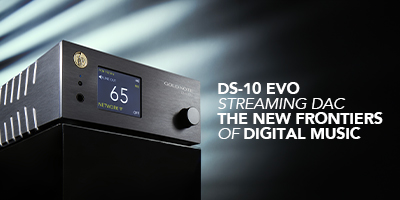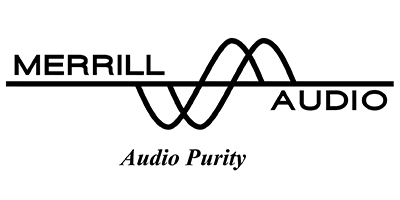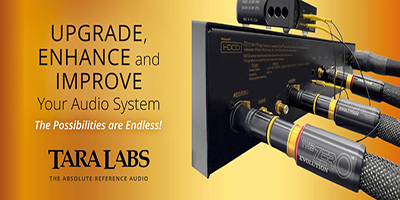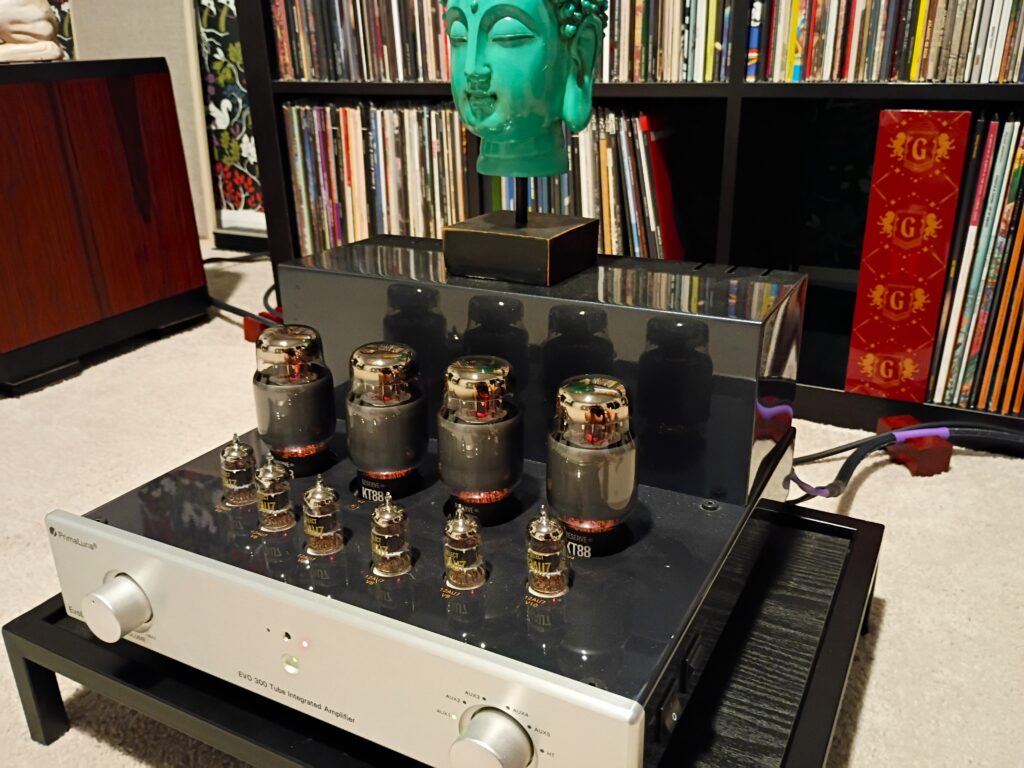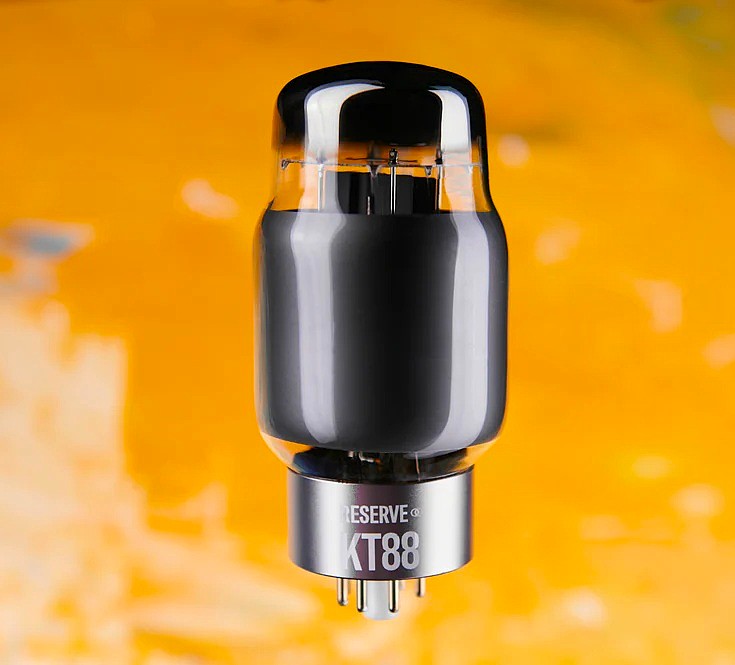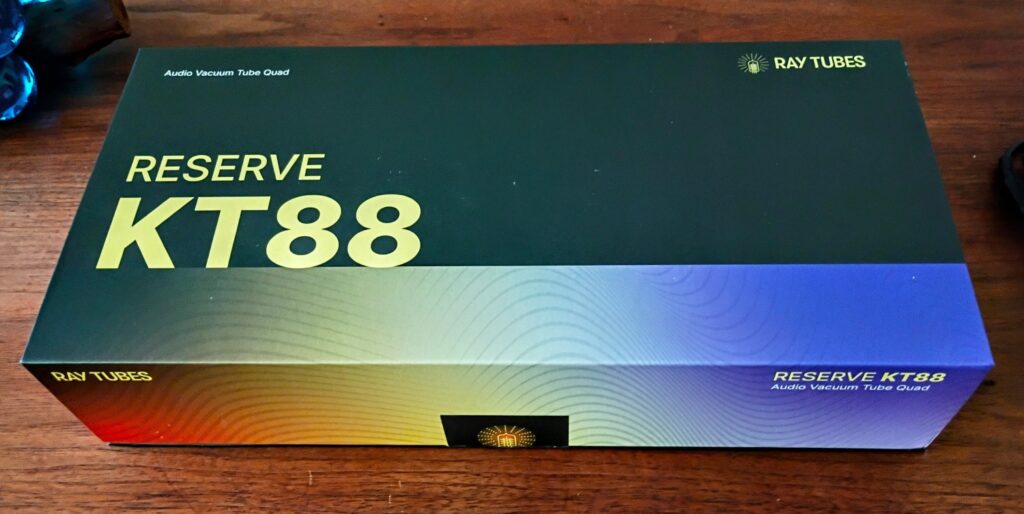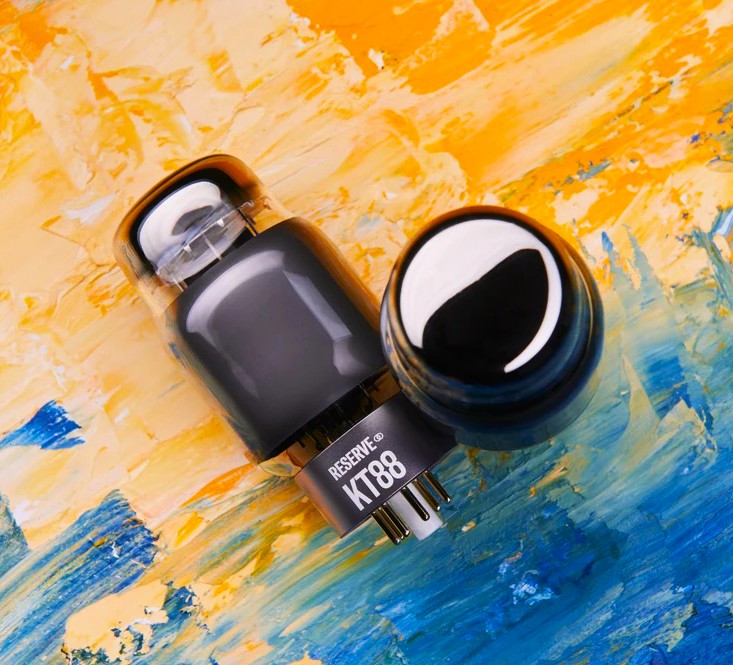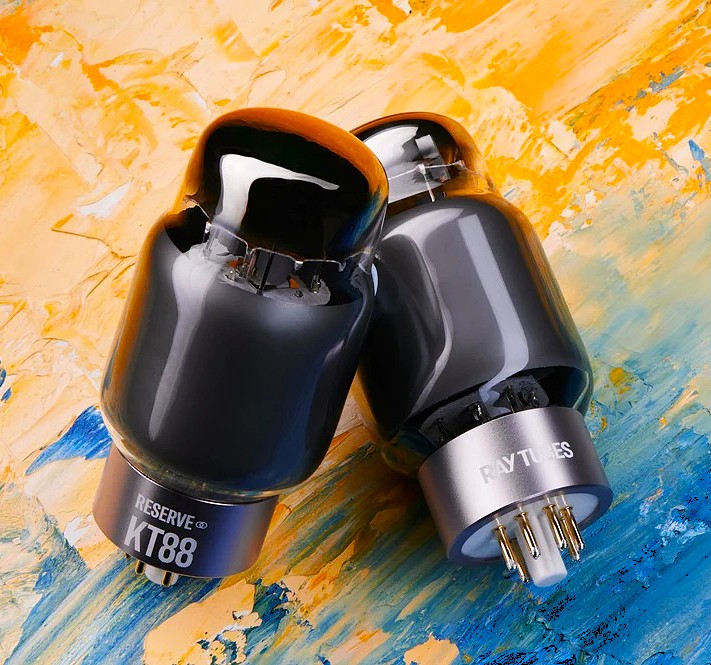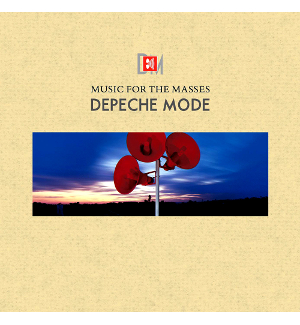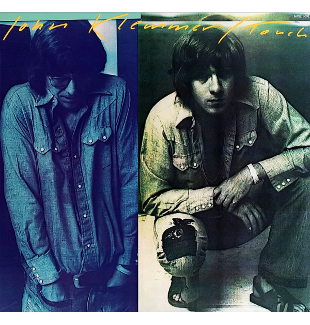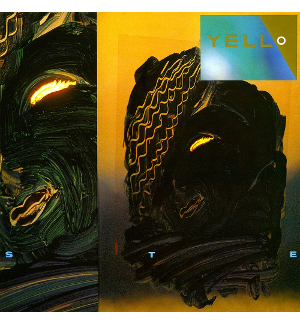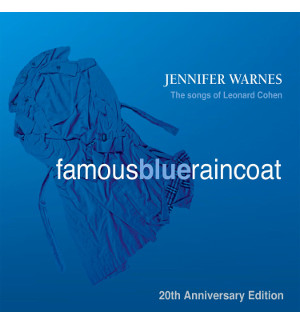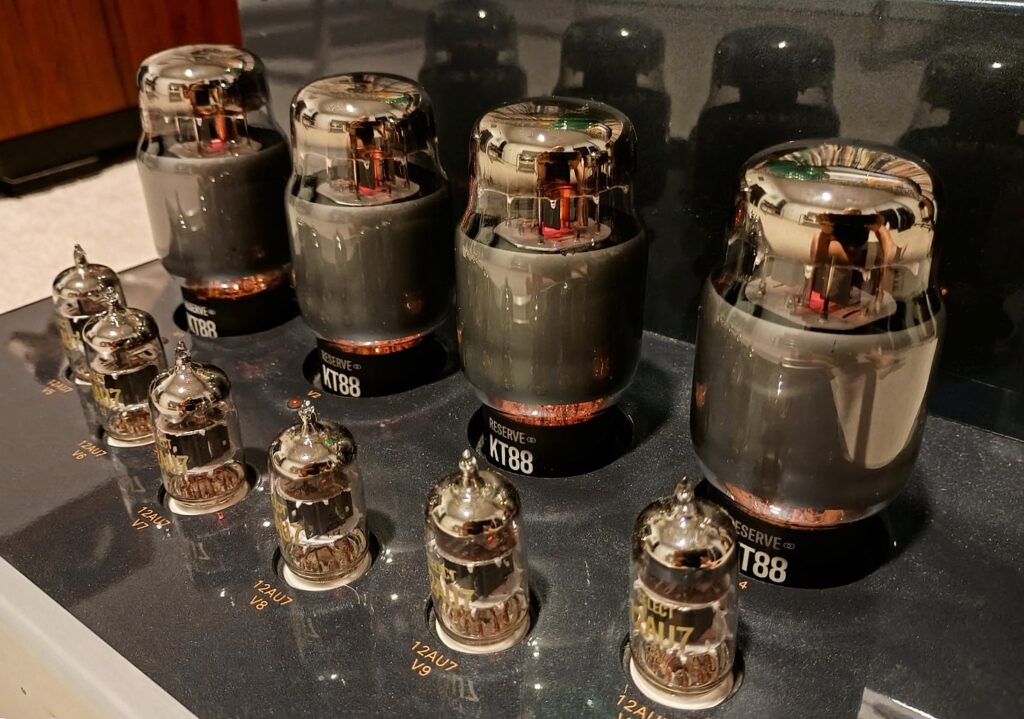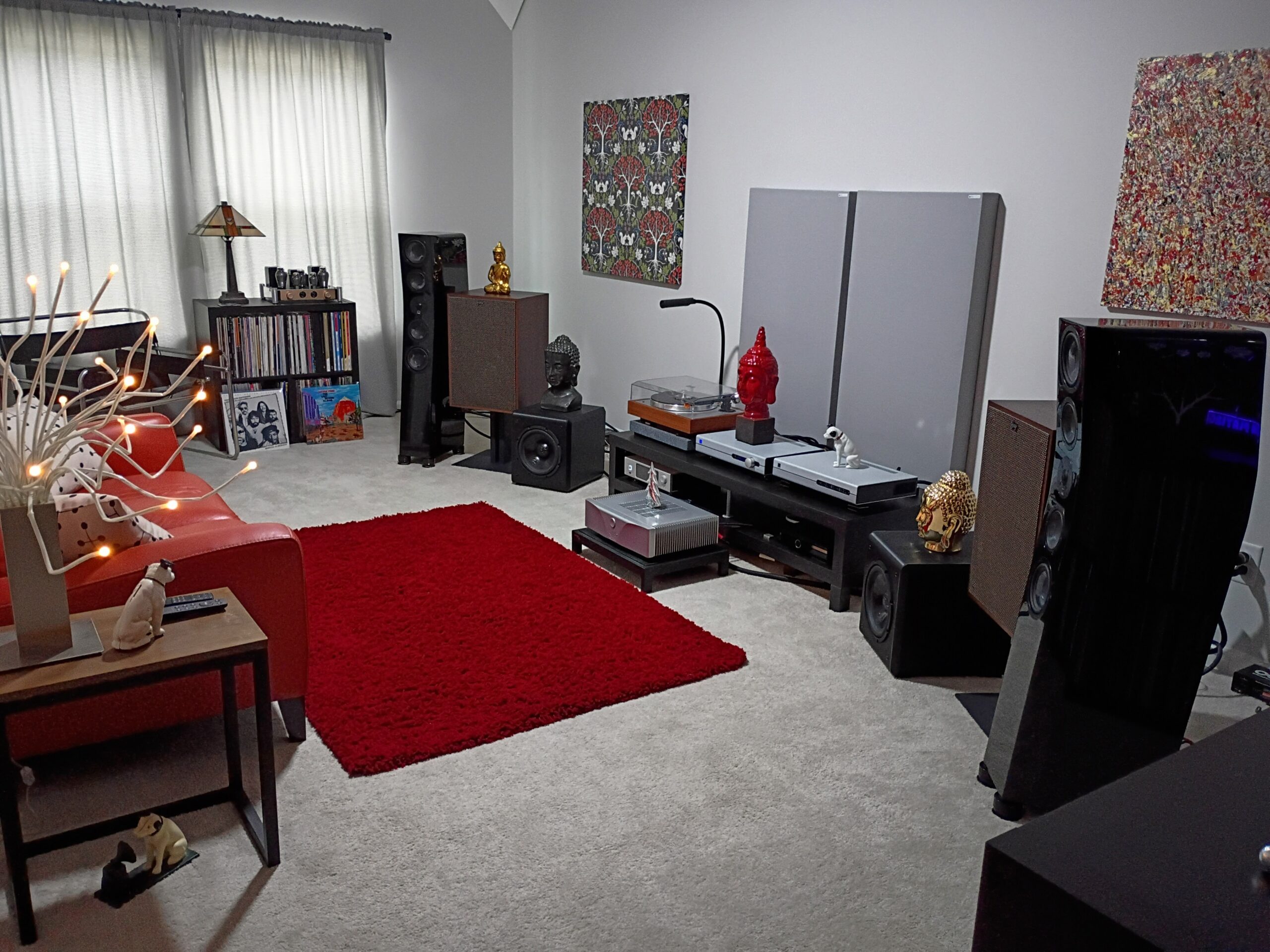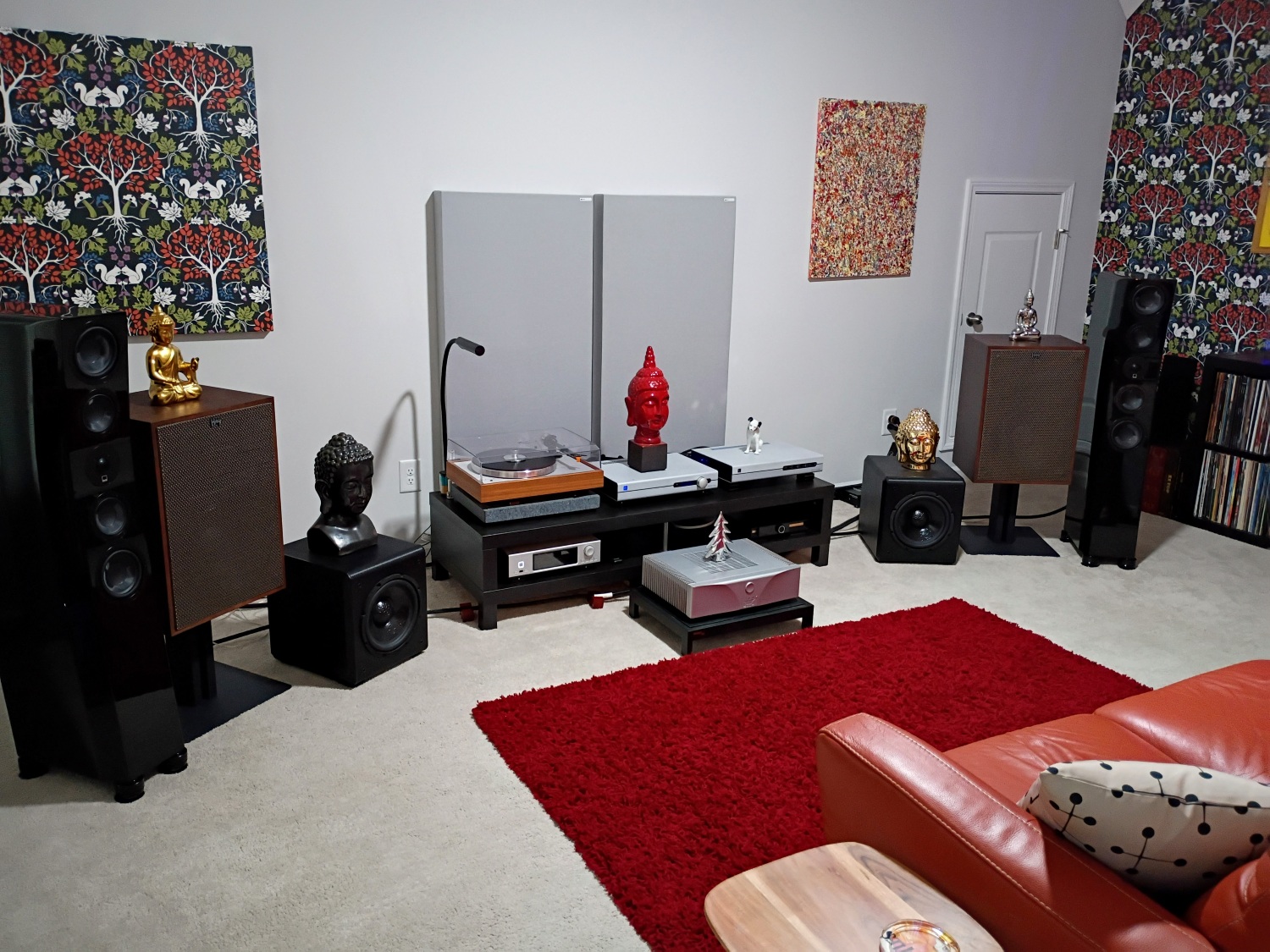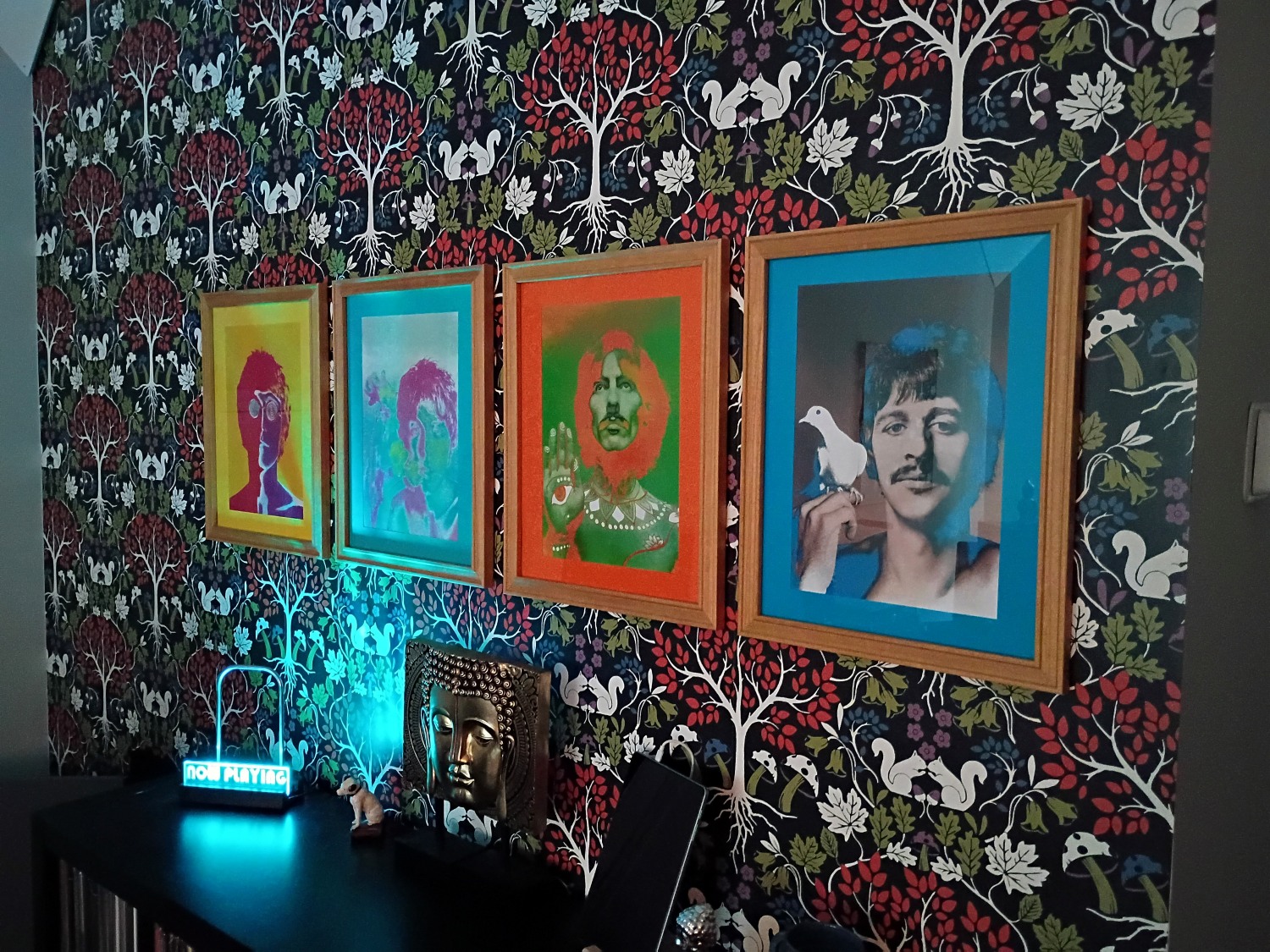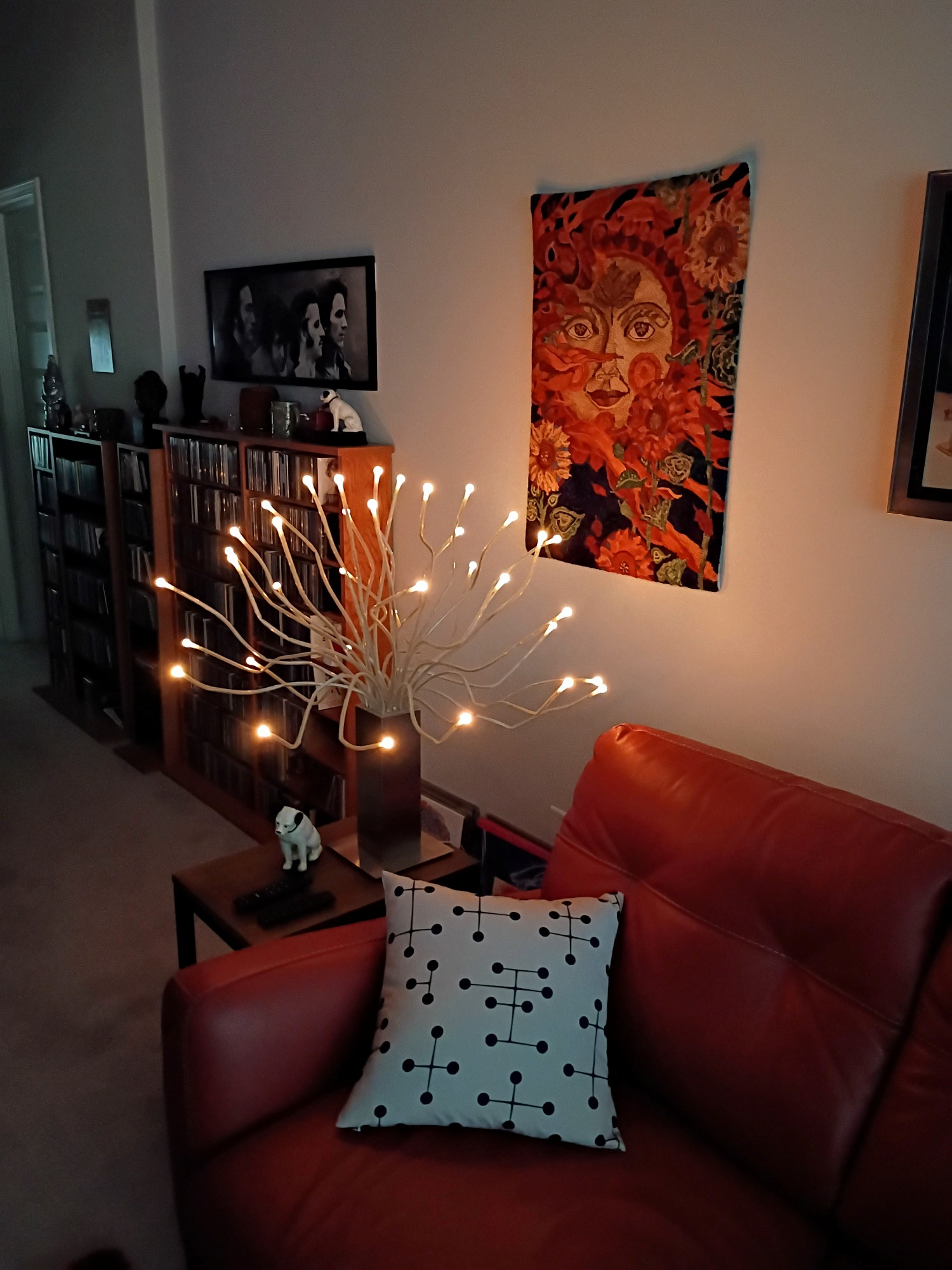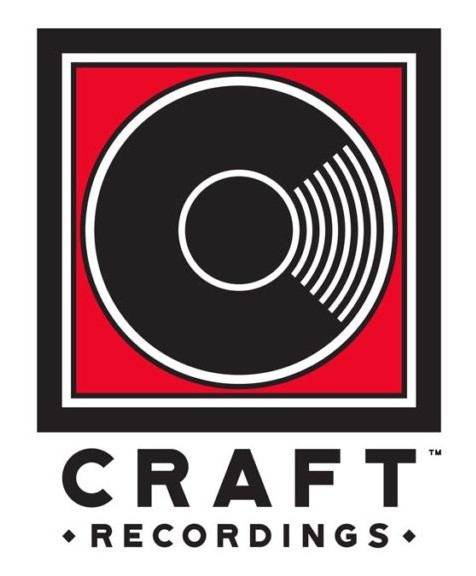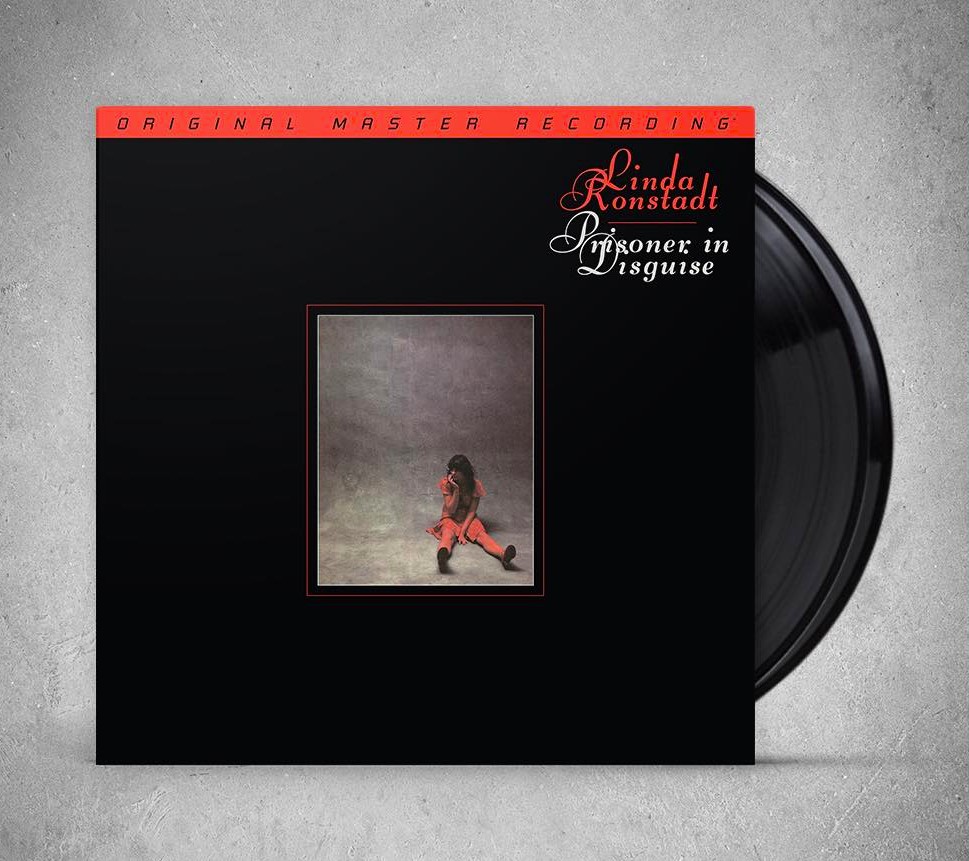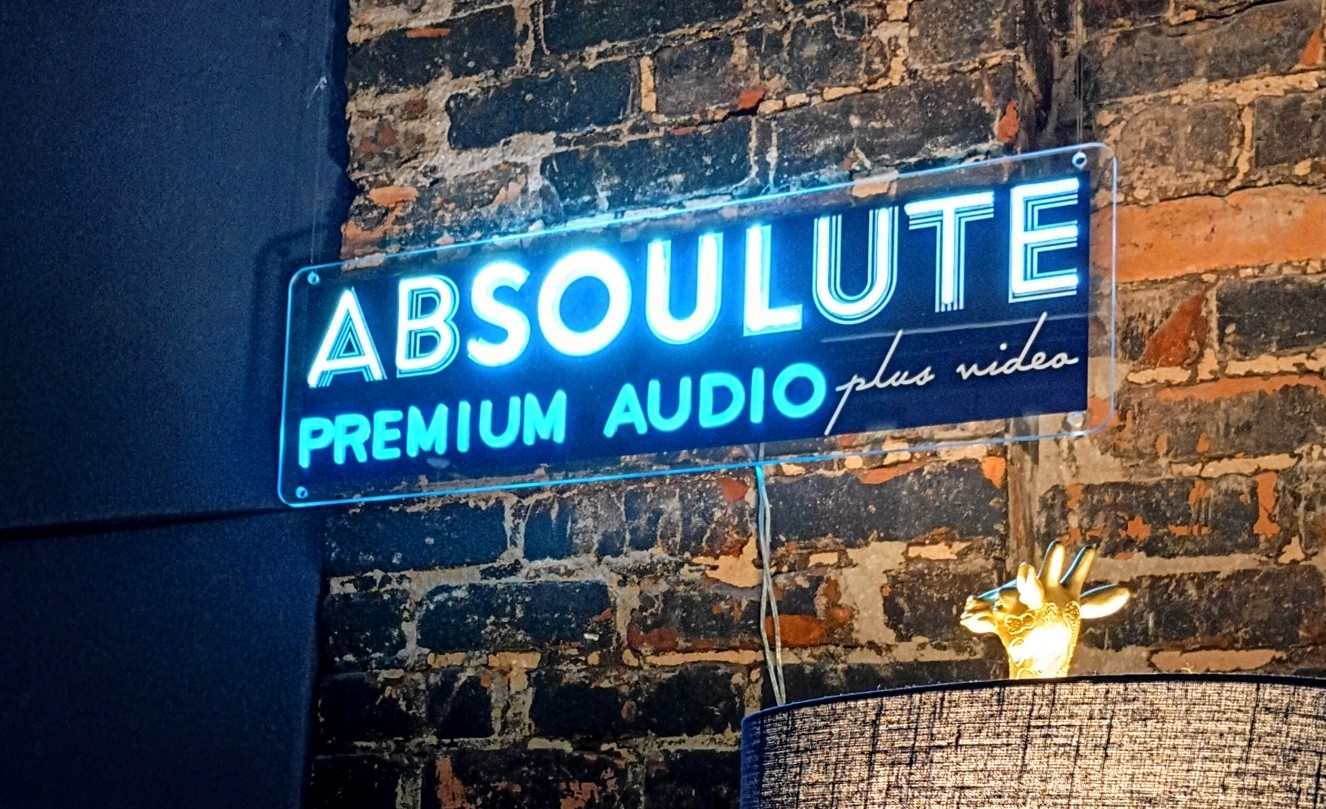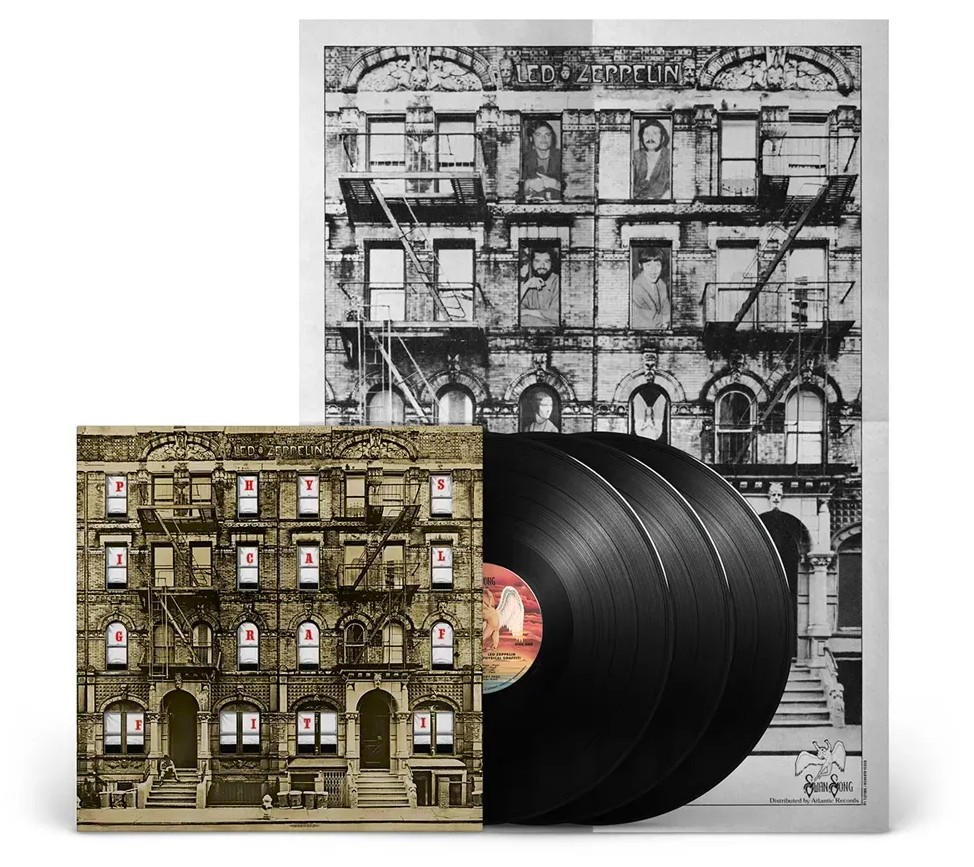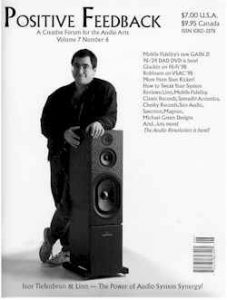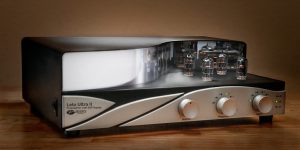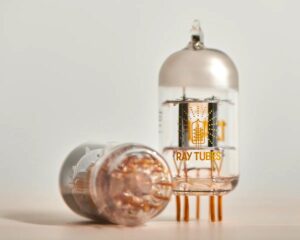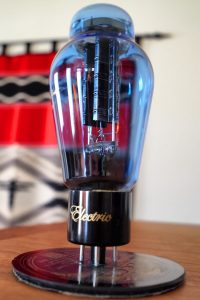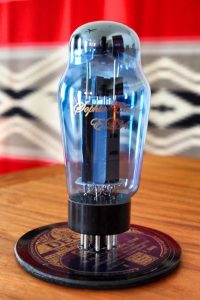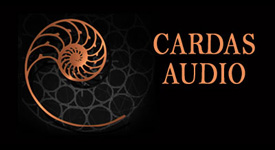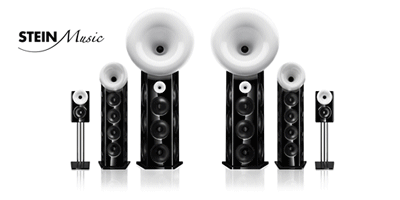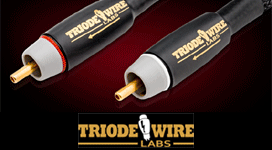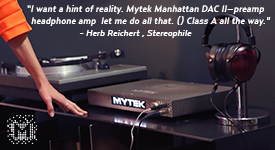When Nelson Wu, CEO of RAY Tubes offered earlier this year to send a full complement of RAY Select and Reserve tubes for evaluation in my PrimaLuna EVO 300 tube integrated amplifier, I jumped at the chance. I've never looked back; RAY Tubes have lifted my analog system performance and musicality to new heights, providing a level of goodness that has elevated my personal and professional listening in a way that makes everything else in the playback chain even better than before! I reviewed that full set of Select 12AU7 and Reserve EL34 tubes HERE, and not long after that review went live, Nelson again reached out to see if I'd be at all interested in hearing RAY's new KT88 power tubes. "Absolutely!" was my answer.
Just to catch everyone up who perhaps hasn't read my RAY Reserve EL34 review, I'll touch on their basics: EL34 tubes are revered by audiophiles and musicians alike for their inherent musicality, and feature an increased level of midrange sweetness that adds articulation and refinement, especially to vocals. EL34's are a classic pentode power tube design that's equally at home in triode and ultralinear amplifier configurations, and a matched pair is generally capable of outputting around 44 watts of power. They're detailed without being overly-analytical, and offer a really good musical balance of tightly controlled bass, a clear and natural midrange, and sparkling, transparent highs. The RAY Reserves were the best EL34 tube I'd ever experienced in my system, bar none, and that's quite a lot for the Reserve KT88's to measure up against!
RAY Reserve KT88 power tubes
As always, RAY Reserve Tubes arrive encased in a colorful "beauty box" that's the best tube shipping container I've seen from any manufacturer at this price point. The very cool, hinged-lid, foam-lined boxes close with magnetic catches; the level of protection provided to them by the packaging and the Reserve tubes' strikingly jewel-like appearance provides a stunning first impression. Reserve Tubes are more uniform in appearance and more elegantly realized than the competition, and also feature gold-plated pins, which not only add to their perfectionist appearance, but also improves their already impressive functionality. Reserve Tubes are beyond doubt the best of the best.
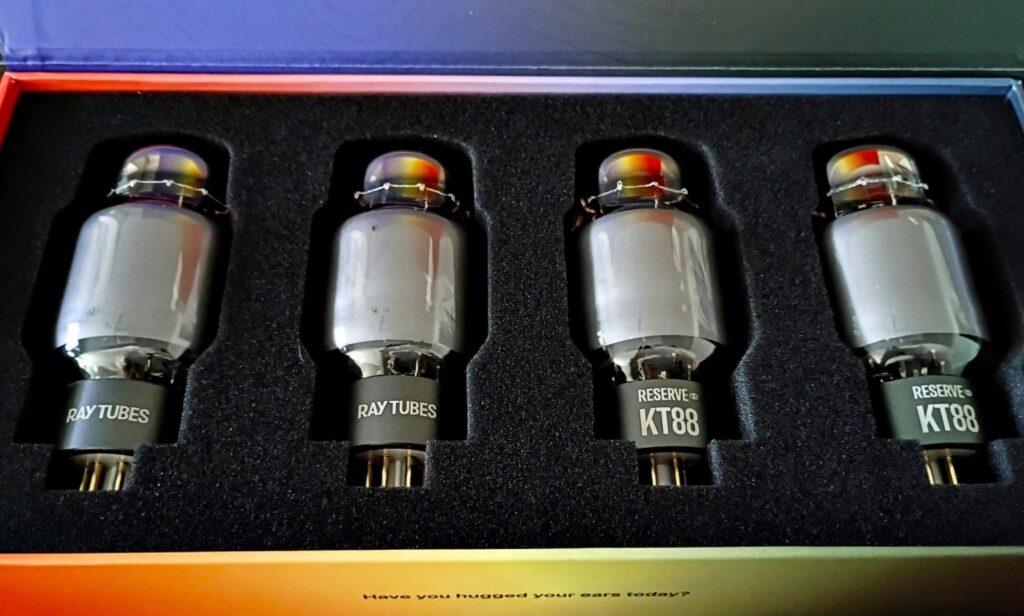
RAY Reserve tubes are meticulously manufactured, rigorously tested, and hand selected to confirm that they achieve higher tolerances than those in RAY's Select and Core collections. With only the very best from any given production run ever emerging from the factory for RAY Reserve branding. After having been tested for their superiority, Reserve tubes are placed in amplifiers and listened to under real world conditions by audio engineers. The Reserve line is held to a higher standard of excellence, and no expense is spared in their manufacture; they represent the pinnacle of the company's design philosophy. Reserve tubes feature improved glass bulb optimization, are finished with exotic coatings, and utilize the finest high-purity metals in their production. Fewer than five percent of tubes from any production run end up meeting RAY Reserve standards.
RAY Reserve tubes are coated with a monocrystalline carbon layer for improved electron flow, increased heat dissipation, and reduced noise. The coating gives Reserve tubes their distinctive appearance, and also functionally improves heat dissipation to extend tube life. Power tubes are responsible for the majority of heat generation in tube amplifiers, so anything that reduces heat is always a welcome benefit. RAY Tubes' exacting level of quality control allows them to offer a one-year replacement warranty on all tubes against any manufacturing defects; that's astonishing for any vacuum tube manufacturer, and the warranty is golden for your peace of mind.
The KT88 is a beam tetrode vacuum tube; the "KT" designation was derived from kinkless tetrode, which was the technical description applied to early production of the tube variety. KT88's were originally introduced in 1956 by the General Electric Company (G.E.C.) in the UK, and were developed and manufactured by their UK subsidiary Marconi-Osram Valve (MOV). The design was based on the KT66 tube, with the KT88 being a larger and more powerful variant intended to compete with American made 6550 tubes. KT88's very quickly became the industry standard for high fidelity applications, with high power output, low distortion, and the ability to handle significantly higher plate voltages. KT88's were originally marketed in the UK labeled as G.E.C. and IEC/Mullard tubes, and in the US as Genelex Gold Lion tubes. NOS KT88 tubes are extremely rare on the reseller market.
KT88's are capable of producing almost double the output power of EL34 tubes. That said, the Smartwatt circuitry of my PrimaLuna EVO 300 amplifier is designed to carefully control each tube's plate and screen voltage precisely, which greatly increases tube life, but also effectively limits the power output of more powerful tube types. In a PrimaLuna amp, a quad of EL34 tubes will output around 44 watts per channel; by inserting a quad of more powerful KT88 tubes, one might logically expect nearly double the output wattage. The Smartwatt circuit only allows an output increase of a few watts per channel; in PrimaLuna amps, you'll hear improved dynamics and bass slam with more powerful tube varieties, but not necessarily a noteworthy increase in watts per channel. Nelson Wu and I discussed this at length prior to his sending the KT88's; while I was certain I'd hear a more dynamic presentation from them, I didn't expect to get a significant increase in wattage.
The following information for RAY Reserve KT88 tubes was sourced from their website, and highlights their performance capabilities:
- Bass Performance: Solid and powerful with deep, well-controlled low frequencies. Ideal for music with large dynamics and complex arrangements, such as symphonies or rock music.
- Midrange Performance: Full-bodied and rich, reproducing vocals and instruments with excellent texture for a detailed and layered sound.
- Treble Performance: Clear and transparent without being overly aggressive. A key strength is its high resolution, ensuring clarity without sounding muddy.
- Dynamics and Soundstage: Outstanding dynamic range, well-suited for music with strong contrasts between soft and loud passages. [The] Soundstage is large and well-defined with excellent spatial separation.
Shootout in the PrimaLuna corral!
By clicking on my name in the header, you can see all the equipment in my dual audio setups. My all-analog system was used for this evaluation, with the PrimaLuna EVO 300 integrated amplifier set to ultralinear mode throughout. My XSA Labs Vanguard monitors (which are highly modified LS3/5A clones) are somewhat inefficient, so the ultralinear mode definitely powered them more effectively; I generally only use the triode mode when listening to music that's heavily acoustic in nature, like folk, classic jazz, chamber music, or sparsely accompanied vocals.
The PrimaLuna EVO 300 amplifier's stock power tubes are EL34's; after replacing them with the RAY Reserve EL34's, Nelson and I had several conversations about a compare/contrast between his Reserve EL34's and the new Reserve KT88's. Which would not only be instructive, but probably a lot of fun, as well! I began the comparison between the two tube varieties with the Reserve KT88's in place and the amp set to its high bias position. The Reserve EL34 tubes had been in near-constant use since they showed up in late January; the Reserve KT88's arrived and replaced them in mid-June, and both are sufficiently burned in for a head-to-head comparison. I've been reviewing a ton of new and reissue LPs over the last month or so, and the KT88's have gotten consistent action within that period. And of course, the full set of six RAY Select 12AU7 input and driver tubes are still providing the preamp function in the EVO 300 amp.
I just picked up a European Sony Music LP reissue (2016) of Depeche Mode's Music for the Masses—it's a really great repress of this classic album of synth-pop, industrial, and alternative music. On side one's lead track, "Behind the Wheel," Dave Gahan's vocals were a bit diffuse, and ever-so-slightly recessed in the soundfield. But the presentation was wide and intensely dynamic, with massive transients and bass and percussion that hit like a sledgehammer. The XSA Vanguards presented a convincing stereo image with superb realism that wrapped above, beyond, and behind the loudspeakers. Music for the Masses is one of the great albums from the Eighties, and really rocks, from the moment the needle drops, with the rotating hub-cap effect that transitions into the heart-pounding bass backbeat of "Behind the Wheel."
John Klemmer's Touch is one of my favorite jazz albums from the mid-Seventies; it's a really melodic album that features some exceptional blowing from Klemmer, with superb accompaniment from a stellar cast of players. On the title track, Joe Porcaro and Emil Richards' percussion sparkles across the soundstage, and John Klemmer's tenor sax with the echoplex pedal effect was firmly anchored in the middle, with plenty of reverb on the sax. Talk about sheets of sound (John Coltrane would not be impressed)! Dave Grusin provides excellent keyboard work on Fender Rhodes throughout the album, and his solo in the song's center is absolute ear candy that definitely requires a replay—it's a wonder my ABC/Dunhill original LP isn't worn out by now! The Reserve KT88's presented this music with a level of you-are-there realism that's only surpassed by what I hear from the Reisong Boyuurange A50 SET 300B amp in my other room—even with the stock Psvane and Shuguang tubes, it's a next level listening experience!
"Desire" from Yello's LP Stella (on a German Universal label reissue LP from 2022) pounds out a crushing foundation of bass, synths, and drums. While Dieter Meier's vocal and the lead electric guitar are perfectly focused in the center of the soundstage, which unfolds above, behind, and beyond the loudspeakers. Stella is an impressively dynamic album, and with the Reserve KT88's, you get that in spades as it played through tracks like "Vicious Games" and the classic "Oh Yeah." I've never heard this record sound so very good on any of my previous systems—this is an album that makes it impossible for you to remain seated in your chair, you simply have to get up and dance, and the KT88's definitely drove the XSA Vanguards to perfection.
Impex Records' superb 1STEP reissue of Jennifer Warnes' classic Famous Blue Raincoat was up next; her crystalline vocal on the title track shows an abundance of warmth and detail. Playback is exceptionally musical, with Warnes' emotionally charged performance perfectly centered in the soundstage. The bass is well-controlled and deep without overpowering the presentation, and Paul Ostermeyer's tenor sax turn is yielded with stunning precision. Through the Reserve KT88's, the soundfield became almost larger than life, with a stunning illusion of Jennifer Warnes live and in my room. I reviewed this album last year, but it never sounded so very good as it does now with the Reserve KT88's in the system.
Rolling back in the Reserve EL34
I replaced the Reserve KT88's with the Reserve EL34's, and also switched the EVO 300 to the low bias setting. I expected to hear a somewhat less dynamic presentation, but the difference wasn't as extreme as I expected. There was very little change in my impression of the volume level between the two tube varieties, which I'd left at the same setting as with the Reserve KT88's. The EL34's offered a midrange that presented instrumental and vocal textures with slightly more transparency and a tad more delicacy, but with a somewhat truncated stereo spread and surprisingly less dynamic drive than the KT88's.
Depeche Mode's "Behind the Wheel," was more centered, with a bit less spread beyond the loudspeakers. Dave Gahan's voice was more perfectly formed, and not nearly as diffuse as with the Reserve KT88's, but didn't quite have the same rhythmic drive. There was almost a halo of sound surrounding Dave Gahan in this track, which spreads from the center of the soundstage to the outside edges—it was a cool effect, and I need to take another listen with the KT88's to see if I hear it through them as well. The bass wasn't quite as extended, and the overall presentation was somewhat less dynamic. Considering the nature of this music, the Reserve KT88's were the definite winner, and presented the dynamic contrasts of the track more effectively. Allowing Music for the Masses to continue to play through the remainder of the album side only confirmed my impressions—I clearly preferred the KT88's.
On John Klemmer's "Touch," the percussion was ever-so-slightly more delicate with the EL34's—though nowhere nearly as crystalline as through the 300B tubes in the Reisong Boyuurange SET amp. While the soundstage spread was comparable to the KT88's, Klemmer's sax was more narrowly placed in the center, with his echoplex effects less diffuse than with the KT88's. The same could be said for Dave Grusin's keyboards, which had less stereo spread and slightly less impact with the EL34's. The sound was still magnificent, but I had a definite preference for the KT88's in the PrimaLuna EVO 300, especially on this track.
Yello's "Desire" was also slightly less dynamic, with the bass and drums exhibiting less of that sledgehammer effect I appreciate on this track. And the soundstage was definitely narrower, though Dieter Meier's vocal was perhaps more firmly focused. This music needs to have a big and brash presentation, and that was definitely lessened by the EL34's. I'd been listening to this album for months through the Reserve EL34's, but didn't really know how much of the bigger picture I was missing until I swapped them for the Reserve KT88's.
On "Famous Blue Raincoat," I expected an increased emphasis on the midrange with the EL34's, and that was definitely the case. Jennifer Warnes' vocal tone and Paul Ostermeyer's sax were essentially the same as with the KT88's, but the soundstage was compressed towards the center. The instrumental textures were perhaps a bit more liquid through the EL34's, which definitely offered a different perspective on this classic track. The presentation was slightly more detailed, but also exhibited less dynamic drive. I played through the other tracks on this side, including the propulsive "First We Take Manhattan" and "Bird On A Wire," which confirmed that while the sound was still superb with the EL34's, I definitely preferred the KT88's.
This evaluation shook up my belief system regarding EL34 and KT88 tubes!
When Nelson Wu of RAY Tubes reached out to me in January and offered to send a matched quad of RAY Reserve power tubes, he questioned whether I'd be happier with EL34's or KT88's. I responded that I personally believe that the EL34 was beyond doubt the tube that most audiophiles would choose, hands-down. Especially over KT88's, which have a reputation of offering increased power and dynamics, but very little to otherwise enhance the audiophile listening experience. Even the folks at Upscale Audio and PrimaLuna have extolled upon the virtues of the EL34 almost ad nauseum—it's definitely the only tube you'll ever need, especially in their amplifiers. They encouraged me to try different tube flavors, and the PrimaLuna amps have amazing flexibility in tube rolling choices—but regardless of how far afield I might stray, I'd eventually come running back to the industry-standard sound of the EL34. And I took their sermonizing as the gospel.
Later this year, Nelson again reached out to gauge my interest in hearing the Reserve KT88's, and of course, I agreed—send them on! But I really didn't expect them to rock my world in the way that they have, and to again totally change my perspective on tube rolling with the PrimaLuna EVO 300. I expected the KT88's to provide plenty of flash—and they did, in spades—but I didn't expect them to offer the kind of sound that would please the right side of my brain that expects clarity, detail, transparency, and musicality. I believed only the EL34's could possibly provide all that in my system, but I was definitely wrong! Only by switching from the Reserve KT88's to the EL34's, then back again, did I realize how full the presentation was with the KT88's. Listening again with the EL34's made the system seem almost slightly dull compared to the KT88's, which surprisingly gave me everything I wanted, along with a significant boost in dynamics. The Reserve EL34's are great tubes no doubt, but in my system, the KT88's were definitely a better match with most of my listening choices.
RAY Tubes are sold worldwide, and are available for purchase in the US and North America from a network of distributors; you can see a list of RAY authorized dealers HERE. Many thanks to RAY's Nelson Wu for his inexhaustible knowledge of all things relating to vacuum tubes and their production, and for making this evaluation happen. RAY Reserve tubes aren't inexpensive, and the current tariff environment in the US has definitely pushed their prices upward. But compared to some of the more exotic brands out there, they're an absolute steal, and have transformed my system's performance while greatly enhancing my listening pleasure. RAY Reserve KT88 tubes come very highly recommended!
RAY Reserve KT88 tubes
Retail: $1127/matched quad
RAY Tubes
All images supplied by RAY Tubes and the author.

